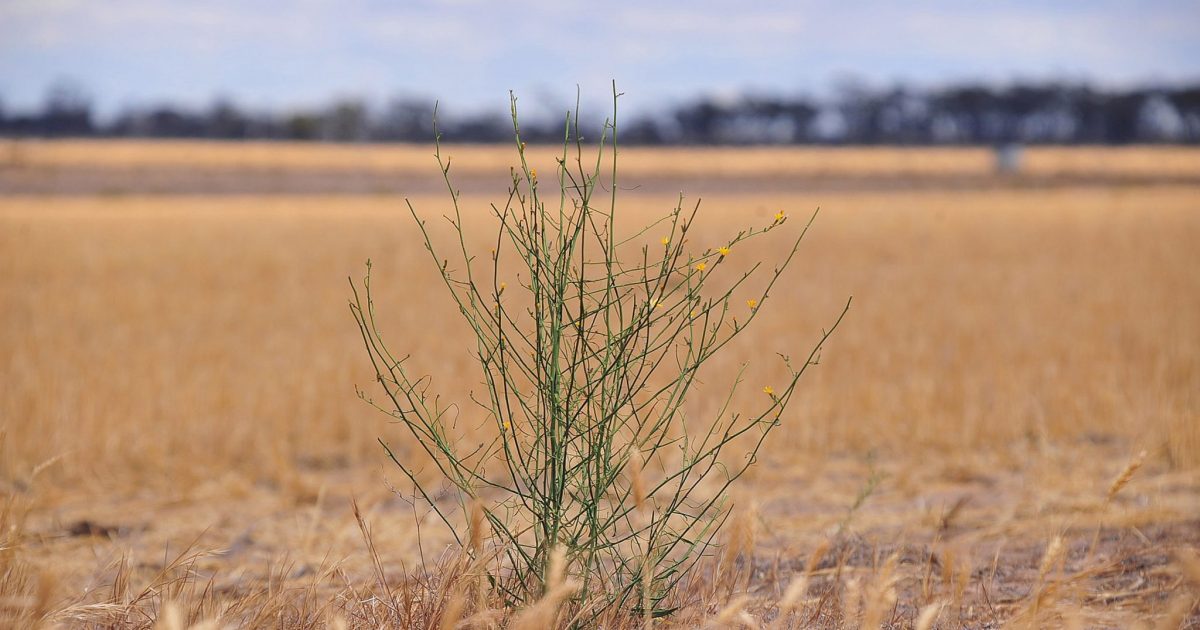The approach of summer has prompted a reminder to landholders across the grainbelt to check their properties for skeleton weed.

Skeleton weed is a declared plant which can drastically reduce crop yields, particularly in lupins and cereals, by competing for moisture and nutrients, mainly nitrogen.
A surveillance and control program for the weed is coordinated by the Department of Primary Industries and Regional Development with funding from the Grains, Seeds and Hay Industry Funding Scheme (IFS).
Department invasive species manager Martin Atwell said skeleton weed was most likely to be found in paddocks at harvest time, and was most recognisable when flowering during summer and autumn.
“All landholders are encouraged to keep a look out for skeleton weed and report any suspicious plants,” Mr Atwell said.
“This supports the active surveillance that is carried out during summer, in conjunction with Local Action Groups (LAGs) and farmers.”
An important part of the annual program is targeted surveillance of properties that are not known to be infested with skeleton weed, but are in areas where the weed is likely to spread.
“Skeleton weed can be more readily eradicated from a farm when it is found in the first year after establishment, therefore early detection is critical,” Mr Atwell said.
“The department will be contacting landholders in coming weeks to nominate properties and paddocks for inspection.”
IFS management committee chair Jim Sullivan said the Skeleton Weed Program provided important monitoring, control and eradication work to support the grain, seed and hay industries.
“The program enjoys strong support from the general farming community,” Mr Sullivan said.
Skeleton weed stems are upright and leafless or have only small leaves, hence the plant’s common name – because it looks like the skeleton of a plant.
The roots, stems and leaves of skeleton weed exude a white latex when cut. Skeleton weed has yellow daisy flowers, and it usually flowers from December to May.
Weed searching methods are outlined in the recently revised department publication, ‘Skeleton Weed in Western Australia: Management Guide’ available from the department website agric.wa.gov.au
The weed can be reported by using the MyWeedWatcher smartphone and tablet application or online reporting tool, or reported to the department’s Pest and Disease Information Service on +61 (08) 9368 3080 or [email protected].


